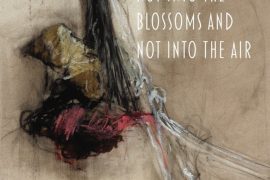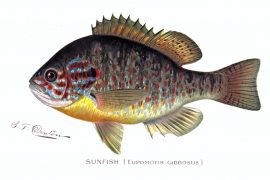Erin Hollowell’s Boundaries is a poetic enactment of ecological healing. The word boundary signifies the existence of two distinct entities or domains keep separate not by any intrinsic difference between them, but by active and ongoing division. A glance through this collection confirms that our poet is determined to collapse division entirely, especially that perennial, deeply Eurocentric dichotomy between humans and the natural world. It is a pesky dichotomy that has proven more resilient than nature itself. While the earth burns, melts, floods, and overheats, humans continue to ignore both its finitude and its fragility.
Hollowell knows that there are deeper, more profound boundaries in need of urgent breaking: the boundary between the spiritual and the material, between what is inside and what is outside. Most crucially, it is the boundary between language and experience that seems particularly responsible for perpetuating the Western tendency to abstract individuals from nature. Quoting Robert MacFarlane, we are reminded that “language is fundamental to the possibility of re-wonderment, for language does not just register experience, it produces it.”
But we do not need the wisdom of sages to confirm that, it fact, there’s an interdependency between what we experience and the beliefs we construct to make sense of, and even control, that experience. Hollowell completely dispenses with the knowledge-versus-perception debate, resisting altogether “the delirium of naming.” For the poet, knowledge extracted from its concrete, experiential origins is impoverished, even suspect. The alleged division between touch and truth is the real fiction. We are told that “shadows have more to tell than unbroken light,” and if we want to learn to see differently, we must give up conventional notions about what we think shadows are. If we are to transform our posture toward the environment from one of objectification to one of profound appreciation, we must respect its power to speak to our senses.
When poetry is not defending itself against the many misconceptions mainstream society ascribes to it—that it is sentimental, ineffectual, lacking any quantifiable purpose—it permits us to engage in a unique form of meaning making in which we perceive and express simultaneously, circumventing our rational mind’s rigid filters. Boundaries is, unsurprisingly, a bold advocacy of the poetic sensibility, because while the earth needs eco-friendly laws and scientifically-informed policies and intelligent legislative initiatives to protect it from further abuse, these things are only effective insofar as they are accompanied by a fundamental renewal in perspective. If the rainwater doesn’t wash our imaginations, all ecological progress will only ever be incremental.
Hollowell is aware that the obliteration of boundaries between humanity and our ecological environments must come second to the dismantling of psychological, conceptual, and linguistic boundaries that exist a priori in our minds. Boundaries asks us to consider how poetry can facilitate this process of becoming (re)attached, (re)connected, and even coextensive with our surroundings. It contains a dual defense of the natural world and the capacity for poetry to remedy the alienation that power structures make us endure with respect to our relationship to the earth.
In terms of the writing itself, Hollowell’s prose is vivid and dense with imagery. We feel “god shifting under the soil” and our “moss-riddled” clothes. It is visual elegance and total immersion—there’s a palatable lack of similes and even metaphors since it is not comparison that Hollowell is after but collapse. We’re reminded that this “green world” is intrinsically divine, that it is suffused by “a theology all moving on the tips of the wind’s fingers.” I especially like how Boundaries routinely inverts many of the foundational assumptions of traditional Christian theology: if the material is mundane, Hollowell decrees that mere water is “reverence revealed.” She flouts the conventions of grammar to create striking, painterly visuals whose sharp juxtapositions successfully conjure the physicality of natural world:
Blackberry vines smother bleached broken fence
To think of poetry as an environment,
festooned with berries sweet sour filled with pips that scour
as a space of imitation,
gummed flowering bright along a fallen log stripped down
is to learn to read
While the breaking of the boundary between humans and nature is the main theme (and real objective) of this collection, it also serves as an overarching metaphor for the breaking of boundaries between words and images, words and their worlds. The task of ecological refamilarization is the task of learning to comprehend the poet’s peculiar epistemology of conceptual collapse; only by this collapse can humans become creatures who learn (or perhaps remember) that they belong to the earth.
L.A. Johnson’s Little Climates likewise illustrates that knowledge—in particular, self-knowledge—can come from one’s engulfment, both physical and psychological, in the environment. Little Climates uses a kind of reverse bathos: profundity bursts onto each poetic scene only after the reader becomes acclimated to more ordinary “climates”—the kitchen, the yard, the bedroom. Little Climates asks us to envision sacredness in the the seemingly unremarkable experiences of our daily life and consider them as climates unto themselves, “mircoclimates” that contain their own complex ecosystems. As in Hollowell’s Boundaries, “re-wonderment” can inspire novel experiences and new understandings of the self, of others, and of nature.
In “Epistemology,” objects in the kitchen—the icebox cake, the porch, the kettle—precipitate a moment of self-revelation that sharply contrasts the (purported) mundaneness of its domestic context. “I never had quiet times in the kitchen / making an icebox cake” the poem opens, and by the end, the speaker’s initial restlessness sparks a revelation:
Stranger, if only things had been
a little different, I could be
old-fashioned in my happiness,
blushing and easy to love.
While Johnson seems to be playing with the different meanings available in the word climate, she also relies on its commonplace definition to meditate on nature. It’s not just that the word “climate” provides a metaphor for any kind of environment; the environment the poet finds herself in is often an ecological one (“Night Passage,” Solstice,” and “Auroras”). We are dealing with literal climates as much as we are conceptual climates. If Boundaries is about our collective reintegration into the environment, Little Climates traces the individual’s quest to describe all environments in the language of ecology. Ultimately, the voice describing a kitchen environment is the same voice deeply conditioned by rain, branches, wildflowers, and foxes.
There’s a certain enmeshment to this gesture that feels similar to Hollowell’s project of collapse. But if Hollowell’s text questions the necessity of divisions with respect to humans and nature, Johnson seems to play with the possibility of interdependence in thinking about human subjectivity, natural landscapes, and man-made environments. In “Self-Portrait as Norway Spruce,” the categorical distinction between tree and human is completely elided in the speaker’s act of self reflection:
I had been quiet once and for a long time:
turned by needles inward with discretion,
tolerated both birds and wild radishes.
When they came to possess me with twine
and metal, they counted, patiently, each limb.
…
I never had a mother or a child—
nothing to bind me to the earth but myself.
And when I become to thin to stand,
bring me to the thieves, seal my mouth
with calla lilies, and call it a burial.
The spruce tree functions as the poem’s primary conceit which allows the speaker to conceptualized herself as a subject of nature. It is easy to interpret this poem as an exploration of life from the perspective of the spruce–perhaps as a personification of a non-living object–but as a “self-portrait,” it is clear the speaker has become existentially intertwined with the spruce who imbues it with her own meaning, her spirit of aliveness, both of which become equivalent to the tree itself—its needles, its discs, its sapwood, now the body of the poet.
In the end, “Self-Portrait” proposes a theory of sameness between the self and the spruce that, like Hollowell’s Boundaries, questions the binary between humans and nature altogether. We are invited to understand humans as indistinguishable from their ecological surroundings—at least in terms of status, but perhaps in other ways as well. I continue to wonder whether the spruce is a host for the poet or if the spruce speaks a language which the poet has learned to hear, a language to which she can now relate. This very uncertainty, like the collection as a whole, is a testament to the invigorating influence on the psyche that the natural world can give those who view themselves as citizens of the earth. Little Climates interrogates boundaries precisely by ignoring them, by showing that they don’t really exist, except perhaps as unfortunate illusions we live by.





